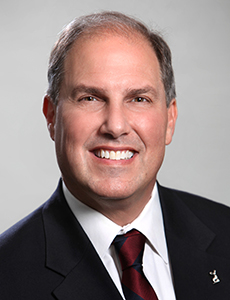Sponsored Content by myMatrixx
From Medication to Meditation: Creating Better Paths to Manage Pain and Protect Injured Workers

Opioid prescribing rates have steadily declined over the previous decade, but that doesn’t mean it’s time for the workers’ compensation industry to declare victory over the opioid misuse crisis.
In addition to the continuing risks of opioids themselves, there are also a wide range of related pharmaceutical and medical challenges that still need to be addressed. Overuse, inappropriate use and failure to adhere to guidelines are issues in drug therapy for injured workers that will be ongoing concerns for the foreseeable future.
Fortunately, years of managing this crisis has enabled clinicians to develop a multidisciplinary system of effective responses. A patient-centric approach to addressing pain in today’s workers’ compensation environment should be built around focused deprescribing, pharmacological and non-pharmacological opioid alternatives, and an enhanced role for behavioral care.
According to two clinical experts in the field, an effective treatment plan should be as individualized as possible and incorporate the many lessons learned from the past ten-plus years of responding to opioid misuse.
Responding to Dangerous Drug Combinations

Phil Walls, Chief Clinical Officer, myMatrixx
One of the thorniest issues related to opioid prescribing is the stacking of drugs — and the resulting chase to address the cascading side effects.
“Drug therapy is all too often additive in workers’ comp,” said Phil Walls, chief clinical officer for myMatrixx. “We don’t see drugs stop when the time is appropriate, but we keep seeing more added on.”
“It’s important to realize all of the side effects, the use of ‘meds for meds’ that clinicians wind up seeing,” said Dr. Adam Seidner, chief medical officer for The Hartford. “For nausea associated with opioids, prescription antiemetics or other gastric agents are often prescribed, sedatives because people are not able to sleep, stimulants because now they can’t stay awake.” Patients may also complain of constipation, erectile dysfunction or other conditions, which are then treated with more drugs.
“We’re managing so many side effects from one drug,” Seidner added.
But many of these add-on drugs are designed for short-term use. Ambien, as just one example, is only indicated for about three weeks of therapy.
“But that would be treating someone with traditional insomnia, not insomnia being caused by amphetamines,” said Walls. “So we’re seeing it used for way too long.”
Closer attention to the endpoint of drug therapy is also vital for other categories of drugs, according to Walls. For example, a skeletal muscle relaxant might be appropriate short-term, to aid in recovery while an injured worker is undergoing physical therapy.
“But at six months, we should typically be at a point where we start getting the patient off of these drugs. And yet again, without appropriate clinical intervention, we’ll see them continue for years,” he said.
Weaning and Deprescribing: Proceed with Caution and Care

Dr. Adam Seidner, Chief Medical Officer, The Hartford
Dialing back the problem may mean eliminating a drug from a patient’s treatment plan, either through weaning or deprescribing. Weaning is used to help a patient get over the physical dependence on a drug with minimal consequences.
At myMatrixx, that process is called compassionate weaning — using a slow dosage decrease that minimizes negative physical effects while the drug is leaving the body.
“If you talk to someone who is addicted to a drug, in many cases they’re no longer seeking that drug for the euphoria it produces, they’re seeking it to keep them from feeling sick,” explained Walls.
“They’re going through withdrawal symptoms.”
Patients very can often successfully wean through a dose reduction of 5 to 10% per week. Once the physical dependence is eliminated, cognitive behavioral therapy can help address the issues underlying the addiction.
In contrast, deprescribing is the process of safely discontinuing a non-addictive medication, with or without tapering off, depending on the drug and the circumstances. Antidepressants are one example of a drug for which a tapering-off approach might be indicated.
“Antidepressants aren’t addictive in the traditional sense,” said Walls. “A patient is not going to experience significant withdrawal if they abruptly discontinue their medication. An abrupt stop, however, runs the risk of causing rebound depression. So even though they’re not addictive, we can’t discontinue them suddenly.”
Here’s the often-overlooked pitfall to weaning or deprescribing efforts: how many refills are left?
Doctors don’t always think about the fact that they may have given a patient a year’s worth of refills, cautioned Walls. “They say, ‘OK, I don’t want you to take this drug any longer.’ But that means they have to cancel those refills.”
If that step isn’t taken, those refills are available and legally appropriate to dispense. If a patient or caregiver was confused by the treatment plan, there’s nothing to stop them from walking into the pharmacy and asking for all available refills.
If the drug isn’t on the formulary, added Walls, it goes to the claims professional. “If they don’t realize the effort that has gone into getting the patient off this medication and they authorize it, that authorization has just undone all the work that went into the whole deprescribing or weaning process.
“Deprescribing means you stop the drug and you take steps to make sure that’s really going to occur,” he said.
That’s where a pharmacy benefit manager can help, he added. “We can monitor that data. If the doctor says no more, we are in a position to make sure that’s what actually happens.”
Knowing When to Say When
There’s no one-size-fits-all approach to knowing when to deprescribe a medication, but guidelines exist for a reason.
“We have to have a marker,” said Walls. “There has to be a point in time where we say, ‘Okay, we’re going to intervene with the prescriber.”
If a marker is 21 days, “it’s not arbitrary. It’s what the guidelines recommend. It doesn’t mean there are no exceptions — that’s why they’re called guidelines,” Walls continued.
Benzodiazepines, like Xanax or Valium, should be carefully considered from day one, said Walls.
That said, it’s important to remember that a prescription that exceeds guideline levels isn’t the same as a stop sign. Each circumstance requires a look at the full picture.
“A patient has severe claustrophobia and they’re being sent for an MRI,” Walls said. “Strapping them down for the MRI is pretty much equivalent to putting them in a torture chamber for an hour. Prescribing one or two tablets for that patient makes sense. But they don’t need a 30-day supply for that simple procedure. That’s what we want to watch out for.
“Our approach has always been, let’s provide meaningful information to that prescriber. Let’s educate them on the appropriate use of these drugs to help them make an informed decision,” he added. “If that prescriber comes back and says, ‘This patient has unique needs, this is why I’m continuing the therapy,’ that is perfectly acceptable.”
Understanding the Pain Management Alternatives
The common-sense approach to managing risks associated with powerful drugs is not to prescribe them at all if safe and effective alternatives exist. Too often though, a stronger medication is the starting point of drug therapy.
“Acetaminophen can provide significant relief for the right type of pain,” said Seidner. “NSAIDs, nerve pain medications, and antidepressants have also provided dramatic improvement for many patients.”
“The problem is, we can’t go backwards,” said Walls. “If you put a person on Percocet, yes, in most cases, it’s going to help with the pain. But it also makes them feel really good. So when you say, ‘I don’t think you should be on Percocet. Let me switch you to ibuprofen,’ they come back and say, ‘Sorry doc, the ibuprofen didn’t work.’ ”
It’s not that it didn’t work, it’s that it didn’t make them feel good the same way the Percocet did.
“If they never experience that opioid effect, they’re fine with the ibuprofen because it’s going to help manage the pain,” he said.
Opioids should rarely be the first choice for treating pain, according to Walls. Some patients do experience extreme pain. “But in so many of the cases we see in workers’ compensation, the pain, although it’s severe, is not so severe that it can’t be managed with an NSAID.”
A lack of clarity about the goal of pain management also plays a role, said Walls and Seidner.
“Achieving zero pain is not a reasonable treatment goal,” said Seidner. “Rather, a patient’s pain rating may be used to conceptualize and construct the meaning of their pain experience.”
“Severe pain certainly needs to be managed,” added Walls. “People need to be able to live life as fully as possible; they need to feel well enough to go to their PT sessions.”
Pain Relief Doesn’t Always Mean Pills
The spectrum of drug-free options for pain management has thankfully grown over time.
Physical therapy, heat/cold therapy, exercise, movement, massage and manipulation, TENS (transcutaneous electrical stimulation) therapy and acupuncture are common non-pharmaceutical approaches.
Mind-body practices such as meditation, visualization, biofeedback, yoga, and tai chi help injured workers tap into the mind’s own mechanisms for overcoming pain, as can behavioral and mental health therapies.
The right fit is unique to each injured worker, and that’s important to keep at the forefront, said Seidner.
“One of the bigger problems is providers not looking at the whole person. They unfortunately have a cookie-cutter approach. All of these various interventions are going to be a little bit different for each person.”
“Pain is complex and requires patient-centered care,” Seidner added. “Access to expert assessment and treatment plans is key. In addition, all stakeholders must understand the intersection of pain management, substance use disorder, and mental health to properly address patient needs.”
Walls and Seidner will be discussing these and other key aspects of pain management further in an upcoming session for the National Workers’ Compensation and Disability Conference. The event will be held live this year in Las Vegas, Nevada, from October 20-22.
For more information, please visit https://www.mymatrixx.com/.
This article was produced by the R&I Brand Studio, a unit of the advertising department of Risk & Insurance, in collaboration with myMatrixx. The editorial staff of Risk & Insurance had no role in its preparation.










